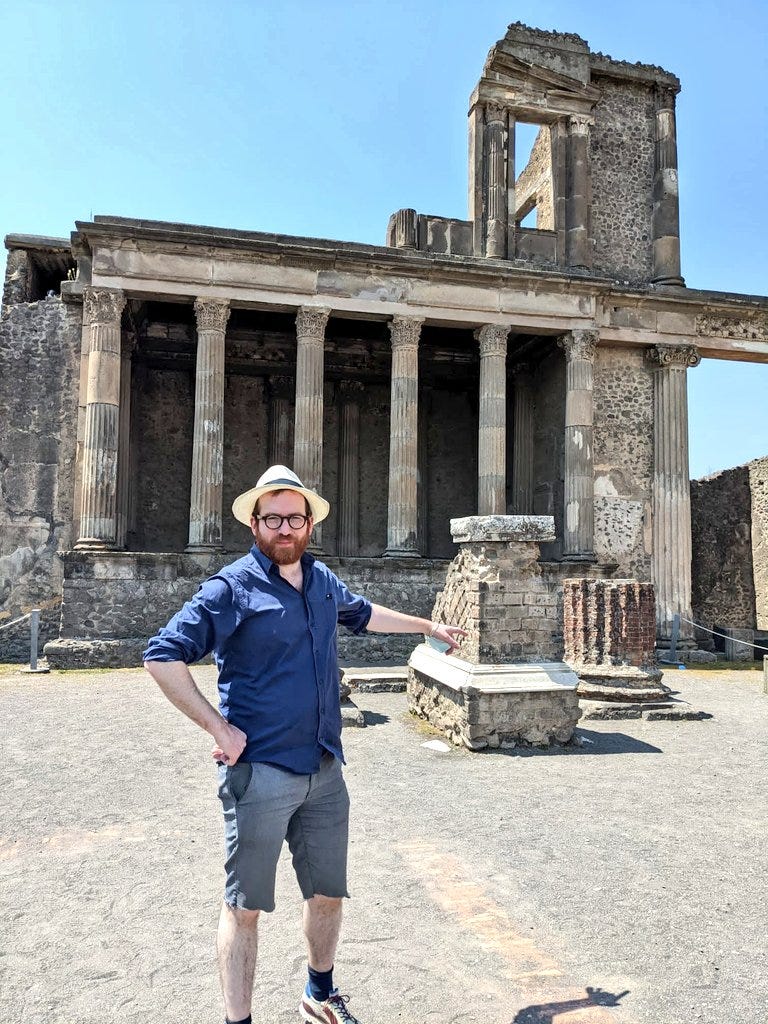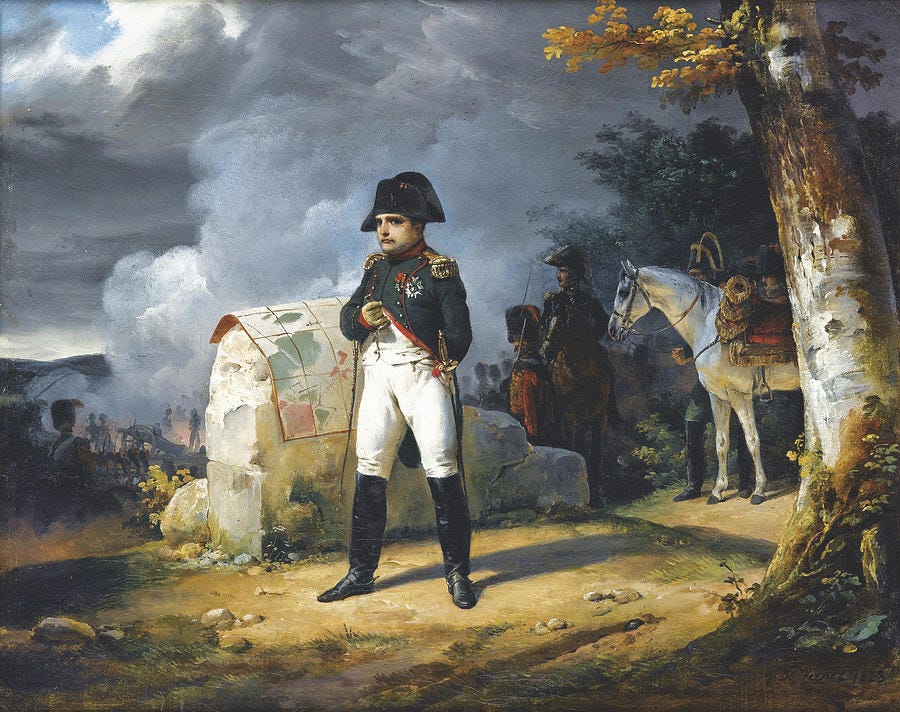How to build a social media team
From strategists to community managers, data analysts to designers...
This month I am on holiday to attend a wedding of some dear friends - and to fulfil a lifelong dream of visiting Pompeii. In the meantime I am republishing an old piece with some ideas on how to build a social media team. Hope you enjoy it!

I always thought that the role of “Social Media Manager” was too ambitious in its scope. To run good social media is a multimedia, multimodal, multiskilled operation - involving everything from researching latest trends and data analysis, to writing sharp copy and complementing it with attractive visual content.
The idea that this could all fall to one person to pull off seemed a bit crazy, though I’ve known my share of lunatics who pulled it off - and will always respect anyone with “Social Media Manager” on their CV as a result.
These days, companies, institutions and other organisations are investing in full social media teams, with specialists across all sorts of areas. Below I try to lay out some of these specialisations, tasks and interest areas. Of course some of these roles can (and especially with fewer resources, must be) combined.
Each of the roles I break down into three areas of responsibility:
Lead: Where they are responsible for execution and delivery.
Support: Where they provide expertise to colleagues who lead on topics.
Knowledge: Where they follow and stay on top of developments and features.
These descriptions are generalised and incomplete in places - so please leave comments adding responsibilities you think are important I might have missed!
STRATEGIST
An excellent multitasker with a strong knowledge of multiple social media platforms, your Strategist should maintain a big picture view of your communication activities overall. Where others can be free to get caught up in the details, they should be always asking the question, “How is this feeding into our objectives?” If you work with clients they should liaise regularly to make sure the projects are fulfilling their needs.
Lead
Designing social media strategies (platform, content, community management) that align with goals, identify audiences and keep to organisational ethos.
Keep a clear view of overall communication activities to ensure your social media activity complements other activities such as press and events.
Set KPIs and adapt plans based on performance reports.
Channel expertise of other staff and client requests into strategies.
Communicate the overall vision to the rest of the team.
Identify tasks, resources and roles needed for the completion of strategies.
Support
Collaborate with all teams to make sure strategic vision is at the core of all social media activities and content development.
Planning content.
Identification of knowledge needs and learning paths for the rest of the team.
Knowledge
Build connections with sectoral leaders.
Stay up to date on latest developments and plan ahead for industry changes.
COMMUNITY MANAGER
At the core of this job are the members of your online community. They should have a good understanding of people - what interests them, what upsets them and what inspires them. Very personable with good writing and verbal communication skills, they should be the conduit through which your organisation builds relationships with your audience.
Lead
Sparking conversations in your community, driving up engagement.
Creating common experiences and reference points to strengthen bonds in the community.
Responding to comments and feedback.
Building relationships with users and allies.
Gathering and reporting on the qualitative reception of your content.
Building the visibility and credibility of your organisation’s brand.
Support
Advising on the community growth elements of your strategy.
Content development.
Knowledge
Staying on top of user needs.
Being aware of the latest trends in online content, the newest technologies and new ways to engage your community.
Staying up to date on all news and topics online and in the media related to your organisation.
DATA ANALYST
A good analytical mind and a knowledge of statistical techniques make a data analyst the backbone of any good social media team. Until the analyst weighs in with proof, everything you are doing is based on theory. They should adept at queries, report writing and have strong presentation skills for sharing their results with other members of the organisation.
Lead
Develop and implement databases, data collection systems, data analytics.
Interpret data and analyse results, look for trends.
Set and monitor KPIs and report on performance.
Prepare short-, medium- and long-term reports for the team and management.
Study the behaviour of the audience to find out who they are and what they want.
Support
Advise on how to optimise strategies and plans based on data.
Contribute to team reports.
Help with the selection of social media management tools for the rest of the team.
Knowledge
Monitor similar accounts for comparison.
Study overall trends in social media.
Take the time to step back and look at the big picture of your accounts.
COPYWRITER
Versatility is at the core of this role. Being a copywriter can demand anything from writing the text for an online quiz to writing a script for a video to researching and drafting technical content for a website. They should have a good understanding of an organisation without getting caught up in the jargon. They will need to always put themselves in the shoes of the audience to say things in the most accessible way.
Lead
Drafting, editing and adapting content to different platforms.
Monitoring how audience responds to different styles of writing and content.
Keeping other members of the team, in particular the Community Manager, aware of your organisation’s jargon to keep writing clear.
Researching the technical side of what your organisation deals with.
Support
Developing the voice and tone of your social media accounts.
Writing guides, job descriptions and expectations to ensure business continuity.
Content production.
Editorial support for other team members.
Knowledge
Reading other content and seeing what other people are saying (and how they’re saying it).
Research your audience, figure out what they are interested in and what content they consume.
GRAPHIC DESIGNER
Creating visual elements that are eye-catching and relevant while conveying your message can be a tough job - especially when translating other people’s visions into reality. It is the role of the Graphic Designer to strike this balance. They should be on top of all things visual for the team, whether it is presenting information in a creative way, designing a new visual identity or adapting visuals for different platforms.
Lead
Preparing visuals for social media, whether it is data presentation or an interesting visual to catch someone’s attention.
Translating messages into appropriate visuals.
Visual identity development.
Adapt visuals based on feedback and performance.
Work with a wide range of media and graphical tools (In Design, Illustrator, Dreamweaver, Photoshop, etc).
Support
Cooperate with other parts of the team on content development.
Analyse how different visuals might outperform each other and why.
Knowledge
Stay on top of the latest trends and developments in design, particularly in relation to social media.
Keeping track of newest developments in tools for graphic design.
MULTIMEDIA MANAGER
A good eye for detail and a creative disposition are among the qualities that make a great Multimedia Manager. Video is a critical format on social media and this should be central to selecting someone - however, they should also be looking out for opportunities with other media like audio and creatively contributing to other parts of the team. Always looking for ways to take advantage of the medium to tell stories, they should be good communicators with patience and confidence - qualities that are useful when working with other people’s ideas.
Lead
Coordinate creation of digital content (video, podcasts, music, etc).
Development of scripts, concepts and storyboards.
Live broadcasting.
Editing and finishing videos and other content with the most appropriate tools (Adobe Premiere Pro, After Effects, etc).
Support
Ad hoc support for the rest of the team on live formats, amateur video making, etc.
Helping staff skill up in their basic video editing skills for sharing simpler content.
Cooperate with other parts of the team on content development.
Knowledge
Stay on top of the latest trends and developments in multimedia production, particularly in relation to social media.
Keeping track of newest developments in multimedia tools.
COORDINATOR
Personable, a good multitasker and with clear vision of the team’s role, the Coordinator operates at the nexus of the organisation and the social media team. They have an overall view of what each individual does, the resources the team needs to perform their tasks and what the rest of the organisation expects of them. They are on the more operational end than the strategist - implementing the vision, helping adjust the approach and troubleshooting barriers and skill gaps.
Lead
Liaise with other communications and policy elements of the organisation.
Communicate the priorities of the organisation to the team.
Prepare and execute tactics and practical plans for the execution of strategies.
Identify training and resource needs.
Advise management on the mood and abilities of the team.
Create a “team culture” - almost by acting as the Community Manager of the team.
Support
Regularly discuss tasks and roles with the rest of the team to make sure they are clear on what is expected of them.
Watch deadlines and progress, securing support for team members if needed.
Contribute to the efforts of the advocate to create a social media culture in the organisation.
Knowledge
Regularly review the strategy to make sure the team is on track.
Research new training courses, guides and other support material for the team.
Find background reading for the team and pass it along.
Monitor the progress and development of the team as individual professionals and as a unit.
INTERNAL ADVOCACY

Ideally all facets of your organisation should be contributing to your social media presence. Whether it is ideas for content, strategic insight or building their own community networks to share your content to, every member of staff can be engaged. The person you want to do this should be sociable, encouraging and be able to communicate social media to non-experts.
Lead
Inform and engage other members of staff to involve them in the social media strategy of the organisation.
Look for tools and come up with ideas to engage the organisation on social media.
Develop staff guidelines for being on social media.
Organise or give training sessions for staff.
Communicate your organisation's lines on particular issues.
Keep staff up to date on activities of the team and look for opportunities to involve them.
Support
Contribute to development of the social media strategy with ideas from staff.
Cooperate with other parts of the team on content development, drawing on other parts of the organisation for inspiration.
Knowledge
Befriend people in the organisation to better understand attitudes and needs.
Research ideas to involve the organisation as a whole to social media.
Anything I missed?
Let me know in the comments or send me an email!










